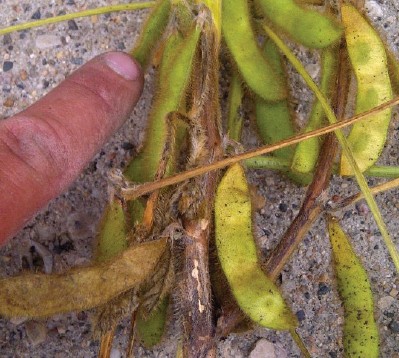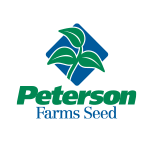Phytophthora: A Northern Soybean Killer


The picture above shows symptoms of the disease: discoloration of the stem and lesions. There are different stem diseases that are slightly different in color. For example, phytophthora is usually brown or slightly purple, while rhizoctonia is more rust-colored.
The pathogen that causes phytophthora root rot can be found nearly everywhere soybeans are grown, but it seems like we see particularly brutal infections in the north country. The good news is we have several solid management options.
Most of us have encountered a root rot pathogen at some point, whether it be rhizoctonia or phytophthora. It’s typical to see plant death from phytophthora throughout the season, with early-season infections taking out seedlings and later-season infections causing some premature death in the stand. If it’s phytophthora, these deaths usually occur in areas with poorly drained, heavy or compacted soils. In our western footprint, it seems like we find it along slough edges.
When it comes to phytophthora management, it is better to be proactive than reactive. The causal pathogen is in almost all soils, and rotation does little to reduce incidence. Thankfully, it’s pretty easy to manage phytophthora in the background using genetic resistance and a well-rounded seed treatment.
There are several options for phytophthora resistance genes. Some genes are considered ‘stronger’ than the others, but I would say this depends on the geography and the races of phytophthora you have present. Regardless of which gene you are using, it’s not a bad idea to rotate sources. In addition, also pay attention to phytophthora field tolerance. Field tolerance is just as important to know as what gene you have when selecting and placing a variety. In heavy phytophthora environments, a bean with a solid gene will still struggle if it has poor field tolerance.
Lastly, making sure you have a quality seed treatment is very important with phytophthora. We made sure that our own treatment, Peterson Select, had the best rate of active ingredients for phytophthora suppression. Be careful when looking at other treatments, as phytophthora is not always a priority for a treatment not centered on our tri-state region. Pay special attention to the total active ingredient (AI) in the treatment you purchase.
Key Management Strategies
- Phytophthora root rot is widespread across soybean-growing regions, but it tends to hit Northern areas particularly hard—especially in poorly drained or compacted soils. This persistent pathogen can infect seedlings early in the season or cause premature plant death later on, making proactive management key.
- Effective control comes down to genetic resistance, strong field tolerance, and a quality seed treatment. Rotating resistance genes, selecting varieties with high field tolerance, and using a premium seed treatment designed for the region—like Peterson Select—can help mitigate the impact of this disease.











